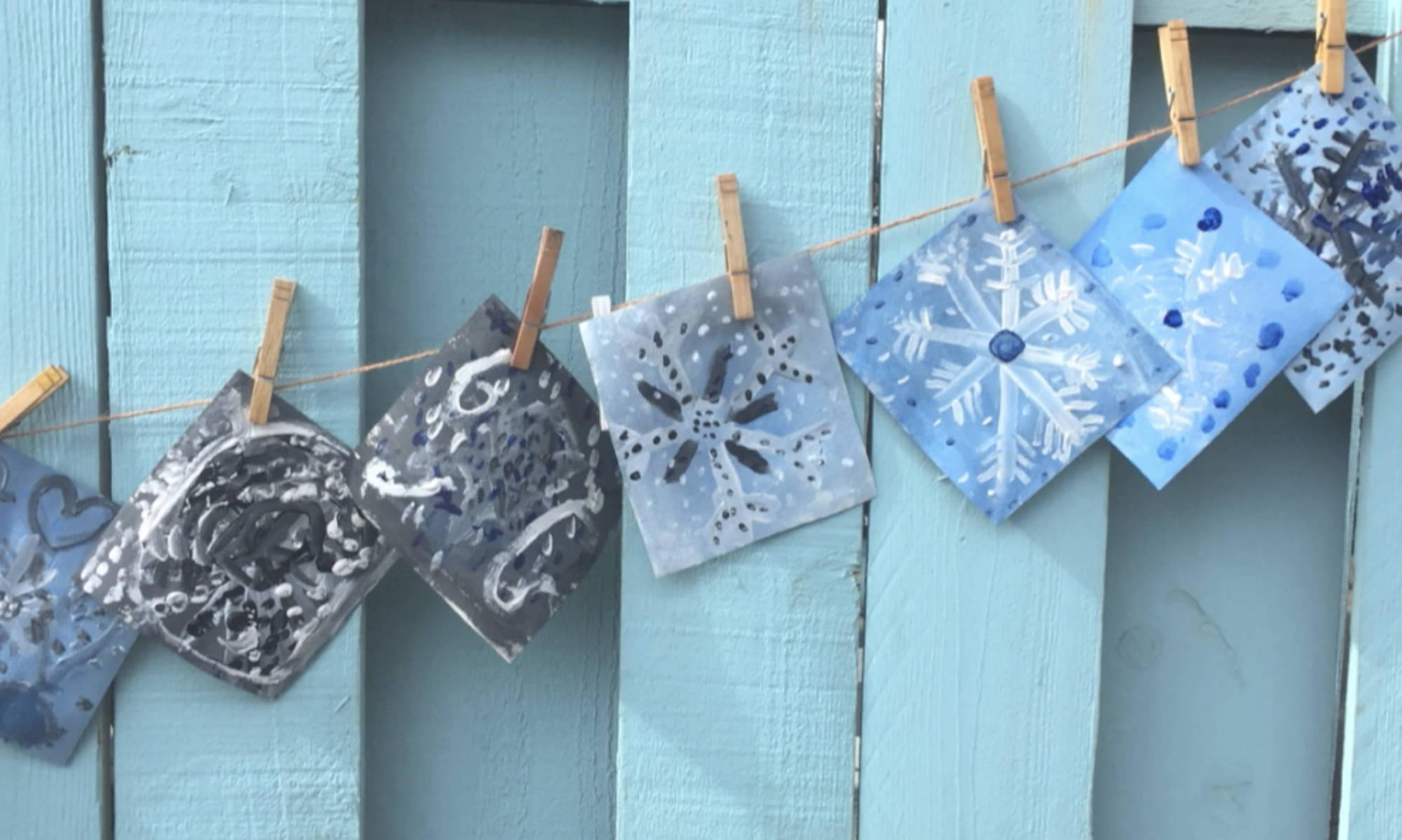
Now that we’re smack in the middle of winter, I’m sure you’re looking for a few exciting Montessori art projects to keep your students occupied on days they’re stuck inside. Well, I say, embrace the season and have your students participate in a few winter art projects.
Here are 3 Montessori art lessons I’m sure your students will be excited about. Plus, they’re easy to set up and fun to do!
Project 1. Snow Coloring: Color Theory

I love teaching young students color theory, and one of the funnest ways to do so during the winter is with snow! Living in California, seeing snow—let alone using it for art projects!—is very rare, but if you’re in the middle of a winter wonderland, bring it into the classroom and have some fun with this project.
Supplies:
- Food coloring or mixing paint in the primary colors: red, blue, and yellow; or this Primary Mixing Kit
- Empty dropper bottles
- Tap water
- Containers, tubs, or buckets (for the snow)
- Snow
- Towels

How to:
- You can do this part yourself, or you can have students go outside and fill up containers of clean snow. Each child should have their own container.
- Fill up dropper or squirt bottles with the food coloring or mixing paint plus tap water to dilute it.
- Have students squirt a little bit of each color onto different areas of the snow.
- Then, allow students to experiment with creating secondary colors. They can squirt one color on top of another to mix them and see what colors they can create on their own.

Project 2. Wrapping Paper Collage: Tear, Collage, & Glue
Do you still have scraps of wrapping paper laying around your home? Bring them into the classroom and recycle it to give students the opportunity to create unique pieces of art. This is one of the simplest Montessori activities to keep kids busy. And while I put this into the winter art projects category, you can really do this any time of year, with any type of paper you have in your classroom. (For more Montessori activities related to this project, download my Ultimate Winter Arts & Crafts Idea Guide and check out page 9.) Need more Collage ideas? Read my Collage Ultimate Montessori Collage Guide

Supplies:
- Wrapping paper scraps
- Scissors
- Glue
- Paper
- (Optional) pencil and eraser
How to:
This project can be done two ways:
- Let students choose the paper designs they want to work with
- Cut or rip pieces into different shapes
- Using these pieces, they can aim to create a specific object/design or keep it abstract
- Have them move the pieces around their paper and experiment with the design
- Once they’re happy with their image, have them glue the pieces onto their paper
Or,
- Have students decide on an image they want to create (fish, butterfly, face, mountains, etc.)
- Lightly draw an outline of the design onto their paper
- Cut the wrapping paper into shapes that will fit within their image
- Once they’ve put the pieces together to their liking, glue them onto their paper drawing

Project 3. Watercolor Painting the Northern Lights: Wet-on-Wet Painting, Wax Resist
Seeing the Northern Lights is on a lot of people’s bucket lists. What you may not know is that they’re easier to see in the winter—especially after making this artwork! Watch the video below to see how to use just paints and crayons to create this Northern Lights landscape, complete with a colorful sky and mountain peaks.
Supplies:
- Jar of water
- Crayons
- Watercolor paints
- Wide and thin paint brushes
- Basic sketching pencil
- Napkins
- Watercolor paper (or another thick paper)
Where to Start: Ultimate Winter Arts & Crafts Free Download
Want more ideas for winter art projects? Download the Ultimate Winter Arts & Crafts Idea Guide! It’s packed with a more than 40 of fun and educational Montessori art projects that’ll get your students pumped and excited about art!


All rights reserved © 2025, Nature of Art®
No part of this blog may be used or be reproduced in any manner whatsoever including reproducing, publishing, performing, and making any adaptions of the work – including translation into another foreign language without written permission except in the case of brief quotations embodied in critical articles and reviews. Nature of Art® Publishing P.O. Box 443 Solana Beach, California 92075.






















































